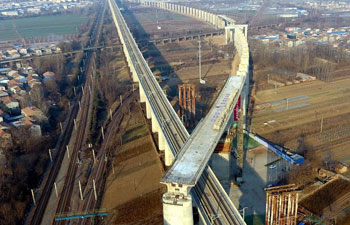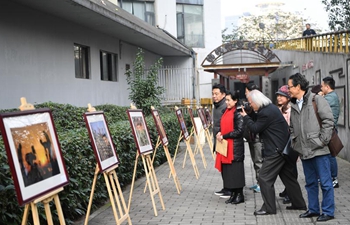by Tao Jun, Bui Long
HANOI, Dec. 19 (Xinhua) -- Officially launched only over a year ago, the Lancang-Mekong Cooperation (LMC) mechanism has already borne fruit, with considerable contribution from China, said a Vietnamese environment official.
"China has worked as a lead partner of the Lancang-Mekong Cooperation mechanism not only at the beginning of the cooperation but also during the business for sustainable development of the Lancang-Mekong river and, especially, for the socio-political stability in the region in the long run," Hoang Quoc Dung, member of the executive board of the Vietnam Association for Conservation of Nature and Environment, told Xinhua in Hanoi, after the third LMC foreign ministers' meeting concluded in China.
At the recent meeting in China's Yunnan province, the ministers from China, Cambodia, Laos, Myanmar, Thailand and Vietnam agreed to deepen practical cooperation by implementing the consensus reached by their countries' leaders to facilitate cooperation projects and build a community with a shared future of peace and prosperity among Lancang-Mekong countries.
Speaking at the meeting, Vietnamese Deputy Prime Minister and Foreign Minister Pham Binh Minh hailed China's role in the LMC mechanism and its proactive engagement of Mekong countries.
Minh also acknowledged the LMC's prominent achievements in the past over a year, including the completion of many early harvest projects.
"Among other significant achievements are the 45 early harvest projects which have or are already being implemented," Dung noted.
The Joint List of the LMC Early Harvest Projects was endorsed by the first LMC leaders' meeting in China's Hainan province in March 2016.
The joint list, along with the Sanya Declaration and the Joint Statement on Production Capacity Cooperation among Lancang-Mekong Countries, laid a solid foundation and charted the course for LMC development.
"China's speeding up of the establishment of joint working groups on key priority areas was also seen as a remarkable event," Dung said.
It is important to have had series of meetings, with the participation of leaders, foreign ministers and senior officials respectively, which can be seen as "opportunities for the six LMC countries to share views and gain mutual understanding," he said.
Thanks to the ever-increasing opportunities created since the first LMC leaders' meeting, Lancang-Mekong countries have been able to publicly and frankly share views for better understanding and closer cooperation, according to the Vietnamese expert.
The LMC mechanism will not only help boost multilateral cooperation among the Lancang-Mekong countries but also bilateral cooperation between Vietnam and China, Dung said, noting that China can help Vietnam more because it has a geographical advantage.
"Geographically, China's snowfield of Tibet is where the Lancang-Mekong river originates while it ends in Vietnam's lower Mekong Delta. It means Vietnam, as the farthest downstream nation, mainly relies on the upper Lancang-Mekong river's countries and China, the world's second-largest economic power, in particular," Dung said.
The Lancang River originates in the Qinghai-Tibet plateau in southwest China. It is called the Mekong River once it flows through Myanmar, Laos, Thailand, Cambodia and Vietnam before emptying into the sea.
More than 326 million people live along the 4,880-km-long waterway, which flows through an area of more than 795,000 square km.
The second LMC leaders' meeting is slated for Jan. 10-11, 2018, in Cambodia.
With better understanding and closer cooperation under the LMC mechanism with its three pillars, the Mekong countries will reap the benefits from more achievements in various spheres, especially in key priority areas, Dung said.
The three pillars are political and security issues, economic and sustainable development, and cultural and people-to-people exchanges.
The key priority areas cover connectivity, production capacity, cross-border economic cooperation, water resources, agriculture and poverty reduction.















